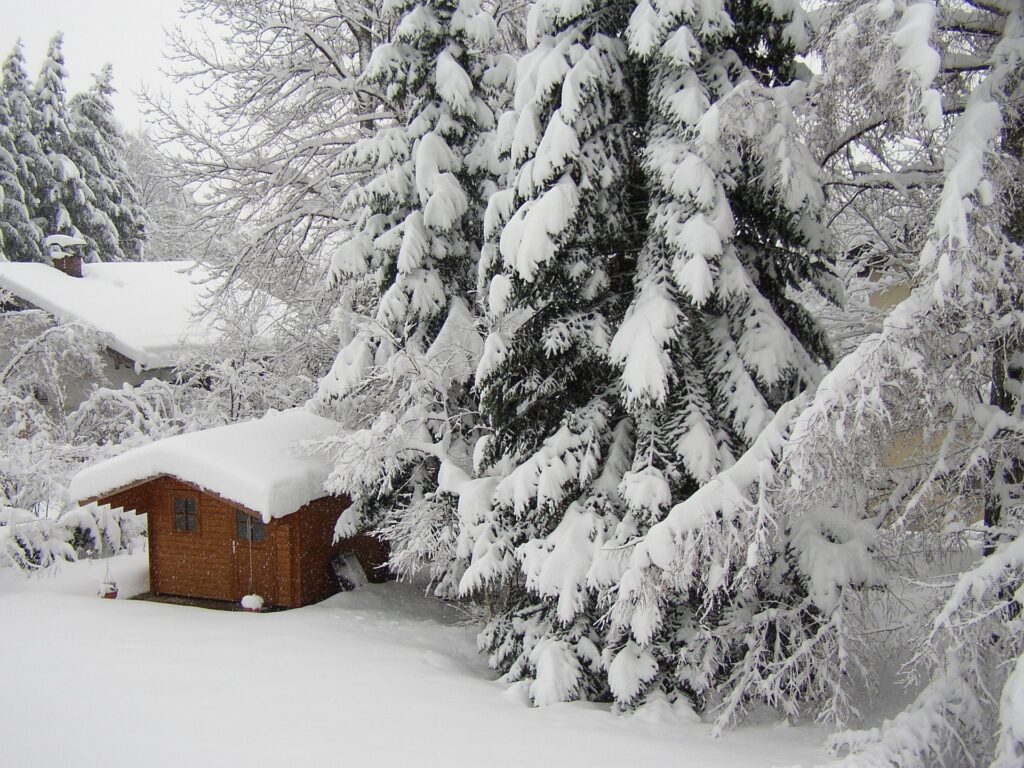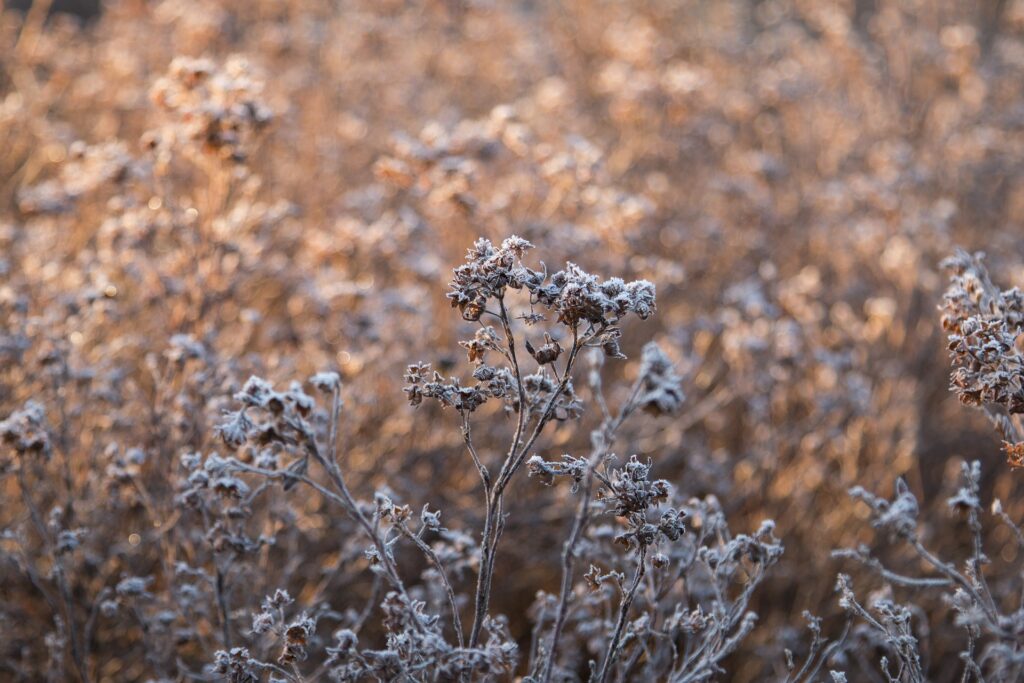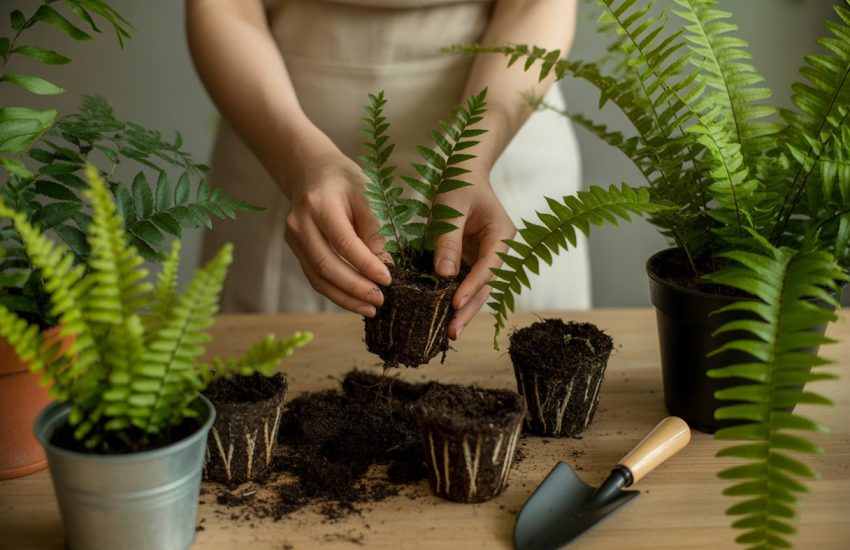Gardening in Winter
Winter is no reason to relax and forget about your favorite garden. It is only at first glance all the work is over already in autumn. With the onset of cold weather, severe frosts can damage cultivated plants, which will further lead to a weakening of their health and a decrease in the volume of harvest in the next season. Therefore, winter garden care is not a trivial bliss, but an obligatory necessity. A complex of simple procedures will help all crops easily survive even the most severe cold.
Often the first frosts occur as early as the end of October. The garden is covered by a layer of loose snow, which carries a certain danger to plants. After all, not all trees and shrubs have had time to finally get rid of the leaves.
If they have been abundantly watered and fed nitrogen-containing fertilizers throughout the summer, active growth can be delayed. As a result, heavy wet snow begins to accumulate on young branches and fresh shoots, which can lead to serious injury. And with the onset of seriously cold weather, the wood becomes especially fragile.
Therefore, during a thaw, it is imperative to visit the garden and shake off the accumulated snow. This should be done with the utmost care. But to take care of your gardening in winter? How to prepare your garden for winter? Let’s find out.

How to Prepare the Garden For Winter
You need to start this work in the fall. First, do a general cleanup. If there are badly damaged trees, they will have to be cut down. Mosses and lichens should also be removed from the branches and boles of healthy plants. If you notice damage on the bark, it should be thoroughly cleaned and then treated with a disinfectant solution of 3% copper sulfate. Pay attention to trees that have a hollow. Before winter comes, be sure to clean the cavity and then disinfect it.
Each cavity should be sealed up tightly with fitting foam or cement. This is done so that the plant will not suffer further damage during the winter frosts. And do not forget to cut off all dry and damaged branches. This is best done with special gardening tools such as secateurs and loppers.
The winter season is the ideal time to prepare your garden for the coming year. Winter is a fantastic time to consider how you want your garden to change throughout the year. Winter offers the ideal opportunity for downtime to plan and prepare for the best results in order to grow beautiful, productive gardens.
See Also: Flower Gardening for Beginners
You should think about what you want in order to plan and prepare your garden for the year efficiently. You can plan your planting and preparation more successfully.
Trampling Snow in the Garden in Winter
From February to March, almost every region experiences a real mice infestation. It lasts until the snow has become too wet and dense for them to dig holes in it. So you need to give your gardening in winter extra protection (each month requires different care in winter). Starting in January, trampling snow on the plot is recommended. This is especially important for young orchards, in which the fall did not have time to thoroughly bandage the boles. It is thoroughly crushed by feet, carrying out this procedure several times a month.
This should be done with caution because with careless trampling there is a risk of damaging the young branches with shoes. You should start at a distance of 30-50 cm from the trunk and gradually get closer to it. Especially carefully trample the snow near apple trees 1-15 years old with still soft bark. Such trees are the most attractive for mice.
Lawn and Flower Care During Gardening in Winter
It’s not just cultivated plants that need protection during the cold weather. If you want your lawn to remain as beautiful as it was in spring, it needs special care. Even in light frost, it is best not to walk on your lawn because of the brittleness of the grass. Mowing in winter is also unnecessary because growth virtually stops at this time.
Pay attention to flowers, which do not always tolerate the winter. For example, near the roses, it is necessary to trample the soil from time to time. Loose soil contributes to the freezing of the root system. Climbing plants during the cold season are very easy to damage. So if they need to be removed from their base for a while, do so as carefully as possible.
Shrub Care During the Cold Season
Until the ground finally freezes or snow falls, they should continue to be watered. If heavy snowfall is predicted, it is better to tie evergreen shrubs with thread in advance. Not superfluous will also be regular shaking off the branches during gardening in winter.
In this way, ice precipitation can not damage shoots and young shoots. Berry crops like raspberries are recommended to be thoroughly covered with snow. Because of strong winds and frosts, the buds of this bush are often damaged. So make sure all branches are covered as high as possible with a layer of snow and gently bent down to the ground.

Save the Harvest
First of all, during gardening in winter, you should take care of the harvest of the current year and the planting material for the next year. As a rule, vegetables are stored in the cellar in the form of preserves in jars, and root crops lose in special compartments or in boxes. In the cellar for this maintain the optimum temperature of +2 ° to +4 ° C and humidity not exceeding 90%. With excessive humidity, you can put a container of salt in the cellar (about 10 kg) or put a few red bricks, but first of all, reliable ventilation will play an important role.
In a pre-prepared cellar (carefully ventilated, dried, and treated against mold and rot) load only dry potatoes and root crops. For better preservation, carrots and other root vegetables can be stored in boxes with dry sand. They are dried and sorted – damaged vegetables are stored separately. Also planting material is stored separately.
Large vegetables of long storage – cabbage, pumpkin, zucchini – are stored on shelves, laying with several layers of newspaper or wrapping paper. Also, cabbage and gourds (such as watermelons) can be hung in nets on hooks from the ceiling.
Onions and garlic are braided or stored in cardboard boxes. But, still, it is better to store onions in a warmer room, with a temperature close to room temperature.
All stocks in the cellar are periodically reviewed, getting rid of spoiled and damaged ones. Since the temperature in the cellar is above zero, the potato eyes may start to sprout – you should promptly remove the sprouts. Otherwise, the tuber will become sluggish, and unfit for food.
Protect Your Gardening in Winter
To avoid severe frost injuries, it is useful to cover trees, especially young ones with snow beforehand. If it is not enough, it is possible to cover at least boles with it, to put it on the rootstocks because, as a rule, roots suffer under severe frosts, not uncommon in the first half of winter, and with small snow cover, or even with its total absence.
By this time, they usually do not have time to undergo hardening associated with significant cell dehydration, which prevents the formation of ice crystals, which, in particular, causes succulent shoots to die even at -1°C. However, complete loss of water in winter, when its supply by the roots is stopped, is also unacceptable.
Cold-resistance of plants is determined by their genetic nature – each crop and variety has its own, but it varies throughout the year and develops gradually: in summer, even the most cold-resistant trees are damaged by a frost of 1°C. And the dormancy period is also an inherited ability to tolerate harsh winter conditions. Preparations for it do not even begin in autumn, but in late summer and go through several stages. Much of it depends on our efforts.
Well-prepared fruit crops are more winter-hardy. What does this preparation consist of, and what does it depend on? On a certain regime of heat, light, and moisture, in which the accumulation of starch and its conversion into sugars occurs.
Other so-called protective substances are also formed. Due to this, the frost resistance of trees and bushes increases and reaches its maximum by the end of the deep dormancy period, i.e. approximately by the middle of winter. At this time, for example, cherry and plum trees can survive without injuries frosts of 30° and more, and apple trees – 35-40°C.
Let us also note that resistance to cold, achieved by plants by the beginning or middle of December, does not remain constant throughout the winter, it then decreases, though not always. This is caused by various reasons.
However, upon the termination of deep rest and during the transition to forced rest, structural and functional features of protoplasm characteristic to it in a frost-resistant state are not lost, the ratio of hormones regulating growth changes, and under favorable conditions, the ability to grow appears. It should also be noted that trees are most severely damaged by frosts after the droughty second half of summer.
Conclusion
Care for the garden in winter in our strip is a must. Strong cold, gusty winds, and heavy rainfall can severely damage cultivated plants. To prevent this from happening, do not forget to carry out all the necessary procedures not only in autumn but also in winter.
Get the big jobs ready for your gardening in winter! Based on your garden plan or not-too-old memories, write down on paper a list of plantations or plant movements you are planning. Despite colder temperatures and shorter days, gardening in winter provides gardening opportunities suitable for many hardy vegetables. Grow and harvest vegetables all winter long!
FAQ
How to protect flowering plants?
While most plants can withstand severe winter freezes, winter-flowering plants like camellias, plum, and cherry trees don’t have as much luck with their blossoms.
A strong frost can harm buds while they are large and about to bloom. When the flowers bloom, the damage may not be seen until it manifests as brown spots on the petals. The entire bud may freeze in some circumstances and fall off the plant. Flowers that are fully opened either turn a sickly brown color or drop to the ground. Cover plants that have buds and open blooms with an old sheet or a frost cover to prevent losing them altogether.
What are winter gardens do’s?
As long as it is soft enough to dig a hole, keep planting. Add mulch as it will aid in maintaining constant root temperature. Include compost. Add compost as it provides the soil with organic nutrients (but no more than three inches thick). Watering before a predicted freeze allows plants to absorb moisture before the ground freezes, which prevents water from getting to the root zone and helps plants, especially annuals and potted plants, survive a hard freeze.
What are winter garden don’ts?
Fertilize. Garden plants should fall dormant and rest during this time. They are forced to begin new growth before the ground warms up in the spring, which not only disrupts this period when they are rejuvenating but also exposes them to hard frosts, ice storms, and temperatures below freezing.
Leave out the normal watering cycle. A once-weekly deep watering is beneficial during dry seasons when the ground is not frozen or covered with snow. Watering is especially important for new plantings.

